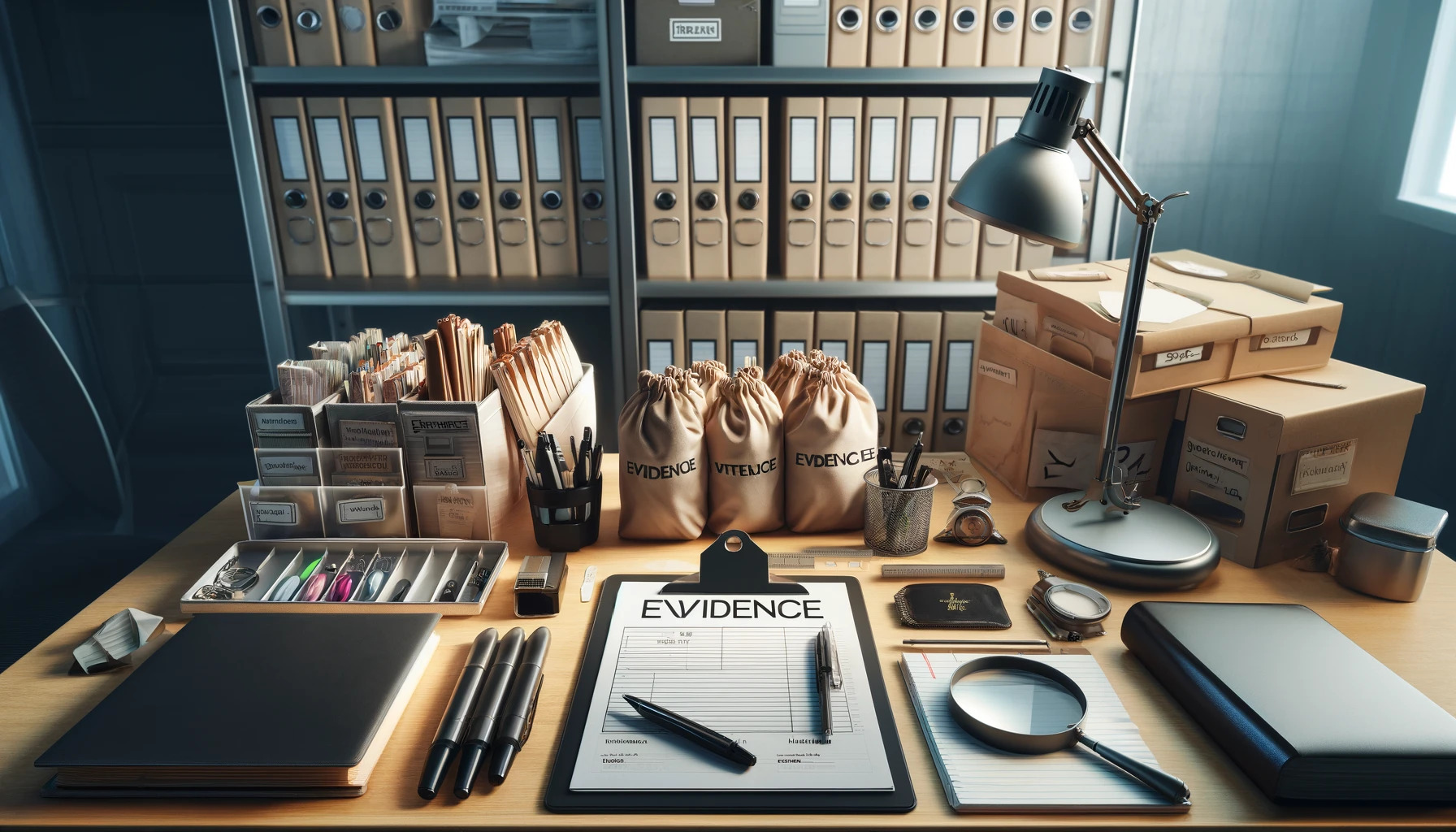Understanding Personal Injury Law
Personal injury law serves as the legal framework for resolving disputes where an individual has suffered harm due to another’s negligence or intentional wrongdoing. It allows injured parties to seek compensation for their losses.
Essence of Personal Injury Cases
Personal injury cases revolve around situations where a person has sustained injuries due to the actions or inactions of another. The core of these cases is the legal concept of negligence which occurs when one party fails to act with reasonable care, leading to harm to another individual—the plaintiff. Personal injury lawsuits can cover a wide range of incidents, including but not limited to:
- Automobile accidents
- Medical malpractice
- Slip and fall incidents
- Defective products
In these cases, the injured party seeks to establish the defendant’s responsibility for the damages incurred.
Establishing Negligence and Liability
To establish negligence in a personal injury case, we must demonstrate that the defendant owed a duty of care to the plaintiff, breached that duty, and directly caused the injury due to this breach. The process entails a detailed evaluation of evidence to satisfy the burden of proof, which rests with the plaintiff. The following elements are critical:
- Duty of Care: Establishing the defendant’s obligation to act prudently to avoid causing harm.
- Breach of Duty: Evidence that the defendant failed to meet this obligation.
- Causation: A direct link between the breach of duty and the injury suffered.
- Damages: Proof of actual harm resulting from the incident, which could be physical, emotional, or financial.
Our goal in personal injury litigation is to secure justice for the injured party by legally establishing the liability of the defendant and quantifying the rightful compensation for damages sustained. The successful resolution of these cases hinges upon presenting a cogent and substantiated argument to support the claim of negligence.
Gathering and Analyzing Evidence
In personal injury lawsuits, the methodical gathering and rigorous analysis of evidence are pivotal to building a strong case.
Types and Roles of Evidence
We understand that evidence in a personal injury lawsuit can be vast and varies greatly in form. This evidence can broadly be grouped into:
- Testimonial evidence: Includes eyewitness accounts and expert opinions.
- Documentary evidence: Comprises medical records, police reports, and other written documents.
- Demonstrative evidence: Such as diagrams and models that illustrate an injury or incident.
- Physical evidence: Any tangible items related to the incident, like damaged property.
- Digital evidence: Involves emails, surveillance footage, and photographs.
These categories play different roles. For instance, medical records establish the extent of injuries and photographs document the accident scene.
Sources of Evidence
We identify and collect evidence from various sources to support a personal injury case. Some sources include:
- Medical facilities: For medical records that detail injuries and treatments.
- Law enforcement agencies: To obtain police reports and accident documentation.
- Eyewitnesses: To gather statements that corroborate the events.
- Digital platforms: Where digital evidence such as videos and emails are sourced.
- Property owners: To secure surveillance footage or accident reports.
Our meticulous approach ensures that no potential source of evidence is overlooked.
Preserving Evidence for Trial
It is imperative to preserve evidence properly for trial. Steps we take include:
- Documenting the scene: Photos and videos to capture the incident location.
- Securing physical items: Ensuring damaged property is kept in its post-accident condition.
- Maintaining records: Organizing and safeguarding all gathered documentary evidence.
- Witness statements: Recording stories of eyewitnesses soon after the incident to avoid memory fade.
We also work with experts to ensure that evidence like surveillance footage or digital files is authenticated and can be admissible in court.
Role of Legal Professionals
In personal injury lawsuits, legal professionals are pivotal for evaluating evidence and determining the merit of a case. They lend their expertise to shape the course of legal proceedings.
Personal Injury Attorneys’ Responsibilities
Personal injury attorneys play a crucial role in managing the legal process for their clients. Our responsibility is to build a compelling case, which includes:
- Gathering and analyzing evidence
- Interviewing witnesses
- Consulting with medical professionals
- Negotiating settlements
- Representing clients in court
We ensure that all legal resources are utilized effectively to establish liability and secure fair compensation for our clients.
Expert Witnesses and Their Impact
Expert witness testimony is invaluable in personal injury cases. These professionals provide clarity on technical aspects that are beyond the general knowledge of the jury or judge. Consistent use of expert witnesses aids in:
- Reinforcing the credibility of evidence
- Offering specialized knowledge, for example, in medical or engineering fields
- Providing professional opinions that can determine the outcome of the case
Their analysis assists us in presenting a clearer picture of the incident, which is essential for a just resolution.
Calculating Damages and Compensation
In personal injury cases, understanding the method for calculating compensation is crucial. This involves a detailed look at the types of compensation available and the factors that influence the final amount.
Types of Compensation in Personal Injury Cases
Economic Damages: These are quantifiable and include:
- Medical Bills: Costs for both immediate and ongoing medical treatment.
- Lost Wages: Income lost due to the inability to work.
- Property Damage: Costs to repair or replace damaged property.
Non-Economic Damages: These are non-quantifiable and often include:
- Emotional Distress: Compensation for psychological harm resulting from the injury.
- Pain and Suffering: Reflects the severity of the discomfort and physical pain endured.
A strong case might also seek punitive damages if the defendant’s conduct was particularly egregious.
Factors Affecting Compensation Amount
Several critical factors influence the calculation of compensation:
- The Severity of Harm: More serious injuries typically result in higher medical expenses and potentially greater compensation for pain and suffering.
- Cases involving Medical Malpractice might have higher compensation due to the complexity and potential impact on the plaintiff’s life.
- The strength of the Judgment can determine compensation, especially when fault or negligence is clearly documented.
Calculating compensation requires a nuanced approach, where all expenses, losses, and harms suffered are meticulously evaluated to ensure a just and fair amount is determined.
Case Evaluation and Legal Procedures
In personal injury lawsuits, evaluating cases thoroughly is critical for establishing a successful strategy. We must consider the evidence’s ability to meet legal standards and how it supports the narrative of causation and harm.
Assessing the Strength of a Case
When we assess a personal injury case, the first step is to gather all witness testimonies and documentation related to the event. This evidence forms the foundation of the case. It’s essential to establish credibility and relevance to the injuries claimed. We scrutinize the details, noting any admissions that could influence the outcome and evaluating expert testimony that corroborates the plaintiff’s claims.
Key elements in assessment:
- Witness Testimonies: Corroborate the incident and its effects on the plaintiff.
- Expert Testimony: Essential for corroborating complex aspects of the plaintiff’s claims, such as medical or technical details.
Cases hinge on presenting proof that persuasively establishes causation—the direct link between the incident and the injuries suffered. Our role is to ensure that the tapestry of testimony and evidence presented creates a compelling narrative that clearly shows this link.
Legal Standards and Rules of Evidence
The legal framework offers a structured approach to determining what constitutes admissible evidence. Rule of Evidence provides the guidelines which we adhere to for assessing the authenticity and pertinent nature of the evidence.
- Relevance: The evidence must be directly related to the case.
- Authenticity: Proving the evidence is genuine and has not been tampered with.
- Credibility: Witnesses must be verified for their trustworthiness.
- Privilege: Certain communications are protected and cannot be disclosed without consent.
Understanding these rules helps us navigate the complexities of legal procedures and ensures that we only rely on evidence that the court will accept. By meticulously following these protocols, we enhance the robustness of our evaluation and are better equipped to represent our clients effectively in court.
Frequently Asked Questions
In addressing some of the most critical considerations for successful personal injury claims, we explore frequent queries regarding the evidentiary requirements and challenges within these legal battles.
How is the burden of proof determined in a personal injury case?
In a personal injury case, we must demonstrate that the defendant was negligent or liable beyond the balance of probabilities. This means we must present sufficient evidence to show that it is more likely than not that the defendant’s actions caused the injury.
What role does medical documentation play in substantiating a personal injury claim?
Medical documentation is pivotal in illustrating the extent of injuries sustained. We utilize these records to establish a causal link between the incident and the injuries claimed, ensuring that the compensation corresponds accurately to the impact of the defendant’s actions.
How can witness testimony impact the assessment of a personal injury lawsuit?
Witness testimony can significantly sway the assessment of liability and damages in our favor. Firsthand accounts help corroborate the circumstances of the incident and can strengthen our position by adding credibility to the claimant’s narrative.
What types of evidence are critical for proving liability in a personal injury case?
Evidence such as accident reports, eyewitness accounts, and physical evidence from the scene are critical for proving liability. We carefully analyze and present this proof to construct a compelling argument that the defendant is responsible for the injury.
Why are expert opinions often necessary in evaluating personal injury claims?
Expert opinions provide clarity on technical aspects which may not be immediately apparent. These professionals offer insights into the causation and extent of injuries, future medical needs, and the nuances of liability, thereby fortifying our case.
How does photographic or video evidence influence the outcome of personal injury cases?
Photographic and video evidence can be influential by vividly depicting the scene and circumstances of the incident. This tangible proof can validate our claims and potentially lead to a more favorable resolution in our pursuit of justice and compensation.




